
The Interstate Commerce Commission (ICC) was a regulatory agency in the United States created by the Interstate Commerce Act of 1887. The agency's original purpose was to regulate railroads to ensure fair rates, to eliminate rate discrimination, and to regulate other aspects of common carriers, including interstate bus lines and telephone companies. Congress expanded ICC authority to regulate other modes of commerce beginning in 1906. Throughout the 20th century, several of ICC's authorities were transferred to other federal agencies. The ICC was abolished in 1995, and its remaining functions were transferred to the Surface Transportation Board.

Macon, officially Macon–Bibb County, is a consolidated city-county in Georgia, United States. Situated near the fall line of the Ocmulgee River, it is 85 miles (137 km) southeast of Atlanta and near the state's geographic center — hence its nickname "The Heart of Georgia."

Chamblee is a city in northern DeKalb County, Georgia, United States, northeast of Atlanta. The population was 30,164 as of the 2020 census.

A chamber of commerce, or board of trade, is a form of business network. For example, a local organization of businesses whose goal is to further the interests of businesses. Business owners in towns and cities form these local societies to advocate on behalf of the business community. Local businesses are members, and they elect a board of directors or executive council to set policy for the chamber. The board or council then hires a President, CEO, or Executive Director, plus staffing appropriate to size, to run the organization.

The history of Atlanta dates back to 1836, when Georgia decided to build a railroad to the U.S. Midwest and a location was chosen to be the line's terminus. The stake marking the founding of "Terminus" was driven into the ground in 1837. In 1839, homes and a store were built there and the settlement grew. Between 1845 and 1854, rail lines arrived from four different directions, and the rapidly growing town quickly became the rail hub for the entire Southern United States. During the American Civil War, Atlanta, as a distribution hub, became the target of a major Union campaign, and in 1864, Union William Sherman's troops set on fire and destroyed the city's assets and buildings, save churches and hospitals. After the war, the population grew rapidly, as did manufacturing, while the city retained its role as a rail hub. Coca-Cola was launched here in 1886 and grew into an Atlanta-based world empire. Electric streetcars arrived in 1889, and the city added new "streetcar suburbs".
The history of Georgia in the United States of America spans pre-Columbian time to the present-day U.S. state of Georgia. The area was inhabited by Native American tribes for thousands of years. A modest Spanish presence was established in the late 16th century, mostly centered on Catholic missions. The Spanish had largely withdrawn from the territory by the early 18th century, although they had settlements in nearby Florida. They had little influence historically in what would become Georgia.

Braxton Bragg Comer was an American politician who served as the 33rd governor of Alabama from 1907 to 1911, and a United States senator in 1920. As governor, he achieved railroad reform, lowering business rates in Alabama to make them more competitive with other states. He increased funding for the public school system, resulting in more rural schools and high schools in each county for white students and a rise in the state's literacy rate.

Ivan Earnest Allen Jr., was an American businessman who served two terms as the 52nd mayor of Atlanta, during the Civil Rights Movement of the 1960s.

The economic history of the United States is about characteristics of and important developments in the economy of the U.S., from the colonial era to the present. The emphasis is on productivity and economic performance and how the economy was affected by new technologies, the change of size in economic sectors and the effects of legislation and government policy.
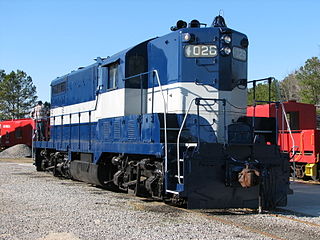
The Georgia Railroad and Banking Company also seen as "GARR", was a historic railroad and banking company that operated in the U.S. state of Georgia. In 1967 it reported 833 million revenue-ton-miles of freight and 3 million passenger-miles; at the end of the year it operated 331 miles (533 km) of road and 510 miles (820 km) of track.
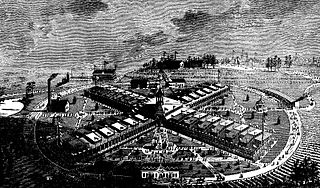
International Cotton Exposition (I.C.E.) was a world's fair held in Atlanta, Georgia, from October 4 to December 31 of 1881. The location was along the Western & Atlantic Railroad tracks near the present-day King Plow Arts Center development in the West Midtown area. It planned to show the progress made since the city's destruction during the Battle of Atlanta and new developments in cotton production. It demonstrated the rebirth of Atlanta and the South by announcing an end to the Reconstruction Era and the sectional hostilities that had plagued the nation for several decades.

Hannibal Ingalls Kimball was an American entrepreneur and important businessman in post-Civil War Atlanta, Georgia.
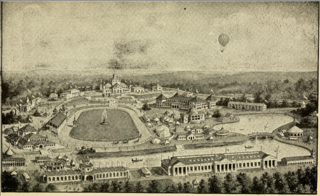
The Cotton States and International Exposition was a world's fair held in Atlanta, Georgia, United States in 1895. The exposition was designed "to foster trade between southern states and South American nations as well as to show the products and facilities of the region to the rest of the nation and Europe."

The Piedmont Crescent, also known as the Piedmont Urban Crescent, is a large, polycentric urbanized region in the U.S. state of North Carolina that forms the northern section of the rapidly developing Piedmont Atlantic megalopolis, a conurbation also known as the "I-85 Boombelt", which extends from the Raleigh area in North Carolina, southwards to Atlanta, Georgia in the southeastern United States.
The Los Angeles Area Chamber of Commerce is Southern California's largest not-for-profit business federation, representing the interests of more than 235,000 businesses in L.A. County, more than 1,400 member companies and more than 722,430 employees.

The economy of South Carolina was ranked the 25th largest in the United States based on gross domestic product in 2022. Tourism, centered around Myrtle Beach, Charleston, and Hilton Head Island, is the state's largest industry. The state's other major economic sector is advanced manufacturing located primarily in the Upstate and the Lowcountry.
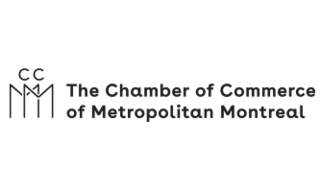
The Chamber of Commerce of Metropolitan Montreal is an association of businesses and businesspeople in Greater Montreal. In its own words it serves to "act as the voice of Montréal's business community and to promote the prosperity of the city and its businesses".
The Gwinnett Chamber of Commerce', is Gwinnett County, Georgia's non-profit, member-funded business advocacy organization, representing a number of businesses within Gwinnett and the metro Atlanta region.

Buford Highway, a.k.a. the DeKalb International Corridor, and in the 1990–2000's as the DeKalb County International Village district, is a community northeast of the city of Atlanta, celebrated for its ethnic diversity and spanning multiple counties including Fulton, DeKalb, and Gwinnett counties in the U.S. state of Georgia. The area generally spans along and on either side of a stretch of Georgia State Route 13 (SR 13) in DeKalb County. It begins just north of Midtown Atlanta, continues northeast through the towns of Brookhaven, Chamblee, Doraville, and Norcross. The name of the corridor originates from the name of the highway which connects to the city of Buford. Creative Loafing's Atlanta edition named Buford Highway Atlanta's "best neighborhood for diversity" in their March 2012 Neighborhood Guide. The population exceeds 50,000.
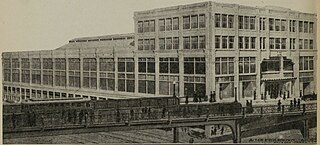
The Peachtree Arcade was a shopping arcade in downtown Atlanta, Georgia, United States. The building, modeled after the Arcade in Cleveland, was designed by Atlanta-based architect A. Ten Eyck Brown and was located between Peachtree Street and Broad Street near Five Points. Construction began in 1917 and was completed the following year. Located in the city's central business district, it was very popular with citizens, functioning as an unofficial "civic center" for the city. However, by the 1960s, the arcade was facing increased competition from shopping malls located in Atlanta's suburbs, and in 1964, the building was demolished to make way for the First National Bank Building, a skyscraper that, at the time of its construction, was the tallest building in both Atlanta and the southeastern United States. In 1993, the American Institute of Architects named the building as one of Atlanta's most notable landmarks to have been destroyed.

















